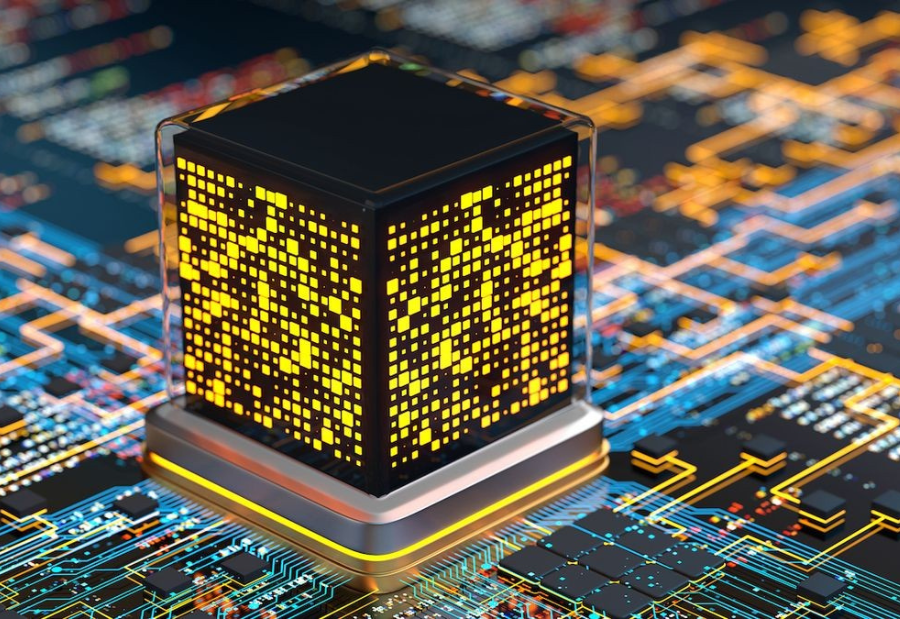Quantum computing is rapidly becoming the greatest technology of our time. While still in its early stages, quantum computers are expected to solve complex problems at speeds we can’t even imagine today. These machines will dramatically boost the way we process certain data, speeding up tasks by millions of times.
However, not all quantum computers are the same. Researchers are exploring multiple ways to use quantum mechanics in computing, resulting in different methods and approaches, each suited for unique applications.
In this article, we will look at 4 distinct types of quantum computers, emphasizing their unique features and the problems they aim to solve.
To begin with…
What is Quantum Computing?
Quantum computing is a radical approach to computing that makes use of the strange yet powerful principles of quantum mechanics. Unlike classical computers that rely on traditional bits (zeros and ones), quantum computers utilize qubits. Qubits have the unique ability to exist in multiple states at once, thanks to quantum phenomena like superposition and entanglement. This ability allows them to process certain types of data at unprecedented speeds.
Now, let’s dive into the different types of quantum computers that are shaping the future.
- Quantum Annealing
Quantum annealing is a quantum computing approach designed to solve optimization problems. These are problems that involve finding the best solution from endless possibilities.
How It Works:
This method uses quantum mechanics to explore various possible solutions simultaneously and identify the optimal one. It’s highly useful for solving problems in logistics, finance, and even artificial intelligence.
Real-World Uses:
Quantum annealing is already being used by companies like D-Wave, which has worked with major companies such as Volkswagen to improve operations in areas like delivery route planning and assembly line optimization.
Why It’s Important:
This approach can dramatically reduce the time it takes to find the best solutions to complex real-world problems, making processes faster and more efficient.
- Superconducting Quantum Computers
Superconducting quantum computers are built using superconducting materials, such as niobium or aluminum, which must be cooled to near absolute zero temperatures.
How It Works:
These qubits exist in a state called superposition, where they can be both 1 and 0 at the same time. Using microwaves, we can manipulate these qubits to perform operations on multiple possible solutions in parallel, rather than one at a time.
Real-World Uses:
Superconducting quantum computers have significant potential in fields like drug discovery, artificial intelligence, and cybersecurity. Companies like IBM and Google are leading the way with this technology.
Why It’s Important:
This technology is one of the most mature forms of quantum computing, and it promises to revolutionize industries that rely on complex simulations and data analysis.
- Trapped Ion Quantum Computers
Trapped ion quantum computers use positively charged atoms, or ions, that are trapped in a 3D space. This isolation allows the qubits to maintain their quantum state for longer periods, making them more stable.
How It Works:
Using lasers, the qubits are manipulated between different states to perform calculations. The ions remain in their superposition state, allowing for long-lasting, accurate computations.
Real-World Uses:
One key application of this technology is quantum networking, where ions can be used for secure communication. Companies like IonQ are developing these systems for applications in defense, such as secure communication between drones and ground stations.
Why It’s Important:
Trapped ion quantum computing offers high accuracy and stability, which is crucial for developing secure communication networks and performing precise calculations for scientific research.
- Photonic Quantum Computers
Photonic quantum computers make use of photons, or light particles, as their qubits. Since photons have no mass and are not affected by temperature, this makes them very stable and ideal for long-distance communication.
How It Works:
Photons are manipulated using optical components like mirrors, lenses, and beam splitters to perform computations. Because photons maintain their coherence over long distances, they can be used for quantum communication and cryptography.
Real-World Uses:
Photonic quantum computers are already being used in quantum cryptography and secure communications. Xanadu, a leader in this field, is developing quantum photonic systems with the potential to revolutionize data security and communication technologies.
Why It’s Important:
Photonic quantum computing offers practical solutions for long-range quantum communication, making it a promising area for developing secure, unbreakable data transmission systems.
Future of Quantum Computing
While many quantum computing systems are still in the experimental stages, we are already seeing real-world applications. Research continues into improving quantum computers’ stability, reducing error rates, and finding new ways to scale up these systems. Today’s quantum computers often operate in a hybrid model, combining quantum and classical computing methods to maximize efficiency.
As technology advances, quantum computing is expected to disrupt industries in ways we can only begin to imagine. From faster data processing to advancements in medicine, artificial intelligence, and secure communication, quantum computing is poised to solve some of the world’s most complex problems.
Also read: Viksit Workforce for a Viksit Bharat
Do Follow: The Mainstream formerly known as CIO News LinkedIn Account | The Mainstream formerly known as CIO News Facebook | The Mainstream formerly known as CIO News Youtube | The Mainstream formerly known as CIO News Twitter
About us:
The Mainstream formerly known as CIO News is a premier platform dedicated to delivering latest news, updates, and insights from the tech industry. With its strong foundation of intellectual property and thought leadership, the platform is well-positioned to stay ahead of the curve and lead conversations about how technology shapes our world. From its early days as CIO News to its rebranding as The Mainstream on November 28, 2024, it has been expanding its global reach, targeting key markets in the Middle East & Africa, ASEAN, the USA, and the UK. The Mainstream is a vision to put technology at the center of every conversation, inspiring professionals and organizations to embrace the future of tech.




